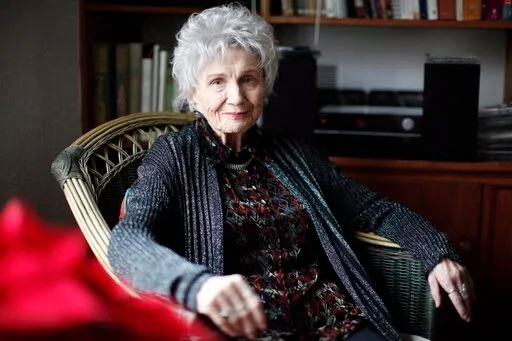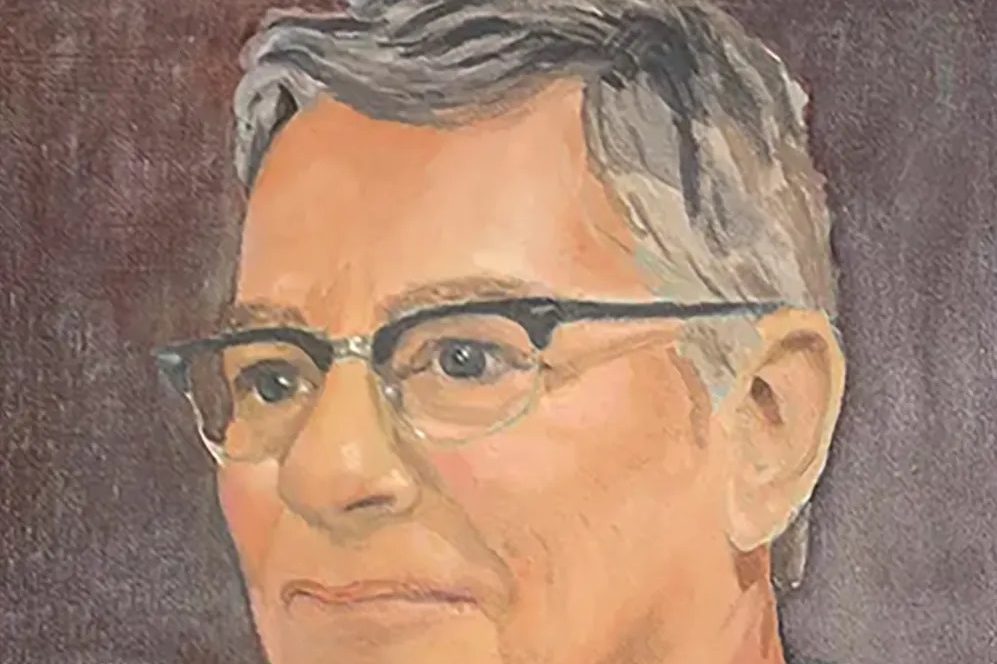In the early 2000s, a young Canadian writer who shall remain nameless found herself in the backseat of a car with her hero, the legendary Alice Munro. A local volunteer had picked them both up at the train station and was delivering them to the Eden Mills Festival, not far from Clinton, in rural south-western Ontario, the tiny farm town where Munro lived quietly for decades with her second husband. The volunteer explained she just had one more errand to run — she needed to pick up the samosas for dinner while they were still hot — and then they would all carry on the festival. The younger writer was nervous to find herself suddenly alone in close quarters with her idol. What on earth would they talk about?
It’s worth nothing here that long before winning the Nobel in 2013, Munro was regarded as a reticent, self-effacing sort of genius in Canadian literary circles. “Our Chekhov,” the American writer Cynthia Ozik famously called her, to which the New Yorker’s James Woods irritably responded, “Everyone gets called ‘Our Chekhov.’ All you have to do nowadays is write a few half-decent stories and you are ‘our Chekhov.’ But Alice Munro really is our Chekhov, which is to say the English language’s Chekhov.”
Articulating Munro’s genius has long proved a challenge for critics
In her later life, though, Munro grew even more retiring, almost (but not quite) to the point of reclusive. To catch sight of her on stage at a public event in the twenty-first century was rare enough to be anecdote-worthy in itself, but to be alone in her presence in the back of a Honda Civic was almost unheard of. As the younger writer racked her brain for something intelligent to say, Munro silently watched the festival volunteer retreat into the shop. Finally, Canada’s future Nobel laureate turned with a puzzled smile and said, “So tell me, who are the Samosas anyway?”
The news that Munro died last week came as a kind of bitter-sweet second passing for her many fans and readers — a sadness tempered by the fact she was ninety-two and for the past decade had been “slipping,” as one old friend delicately put it. Not long after her Nobel win in 2013 when Munro announced her retirement from writing. Not many writers officially “retire” anymore but in her case, there was something fitting about it. To the extent that she had a public image at all, Munro’s was a kind of ephemeral humility. It has always been difficult to connect the pretty, sweet-faced smiling lady in the sun bonnet to the celebrated authoress and internationally revered body of work, not because of the subject or form is outwardly showy (almost all her stories are about seemingly ordinary people living grappling with seemingly ordinary lives) but because its genius has a kind of inarticulable quality just beyond the reach of language itself.
She was, perhaps, the last of the great twentieth century writers to exist wholly in a time before the digital revolution ensured everyone knew everything about everyone. Having said that, what we did know about her is often reflected in her subject matter. She was a woman very much defined by the conventions of her era — a divorced former housewife who wrote and published countless stories about the interior lives of divorced housewives.
Articulating Munro’s genius has long proved a challenge for critics — while there are many essays and a fairly recent Critical Companion by the scholar David Staines, the body of scholarship is a light one. Remarkably, there is not a single serious and definitive popular biography in print. Her friend and contemporary Margaret Atwood, who has published several insightful popular essays on Munro’s work, told me in an email she suspects part of the reason for the scant volume of Munro scholarship is that many academics “simply don’t know what to say.”
“She doesn’t do ‘political issues of the day.’ She does class in southern Ontario and BC, but that is not high on the academic critical agenda right now. She’s old, white, and semi-rural. Small town. That’s her territory and young academics don’t know much about it, if anything.”
Atwood recalled the uphill battle Munro had fought for recognition in her day: “Alice was damn well not going to blush unseen, but she had to fight her way through the brambles, both sides: ridicule from the townsfolk and snobbery from the city sophisticates,” adding, “wonder why we were friends?”
Munro is, arguably, the sort of once-in-a-generation genius whose vast intelligence and insight transcends changing fashions in scholarship. One suspects that long after the fresh water dries up, the robots will read her and marvel.
Aida Edemariam (another Canadian writer) made this eloquent attempt at explaining Munro’s genius: “All the layers of life exist simultaneously in her sentences. Each layer is seen as clear and true, even — perhaps especially — the truths we’d rather not see, and the ways in which what we do and what we know (and especially what we refuse to accept we know) so often contradict and undermine each other. This makes her writing sound unwieldy, but miraculously, it’s the opposite — ludic, sharp, full of danger and beauty, and unforgettable.”
If any writer was acutely aware of how complicated the human psyche is, how little we can possibly understand what goes on inside the mind of another person, let alone ourselves, it was Munro. This question — who are we really? Why on earth do we do the things that we do? — is arguably the central question of all great writers but Munro came closer to answering it than most. “The key to happiness,” she once wrote, “is good health and a bad memory,” a devastating and funny truth made all the more poignant by her last silent decade.
Munro had a reputation for being humble, but in fact, reading over her early interviews it becomes clear that, in her own quiet way, she was just as deeply driven as all the great writers of her generation. The sunbonnet and lack of a “platform” belied the extent of her ambition which (if you believe the woman herself) every bit as devouring and ferocious as her male peers. But her relationship with fame was a complicated one.
One of the last full length interviews Munro ever gave occurred in 2015 on her eighty-fifth birthday, with the CBC radio presenter Eleanor Watchtel in Goderich, Ontario. At the end of the conversation Watchtel asks Munro whether, after fifty years of publishing, she thinks her literary success has, over all, helped or hindered her writing?
“Oh it hinders it,” she says without hesitation, almost dismissively. Then she quickly moves on to the subject of her ultimate ambition, the one great prize she says she has in fact been working toward her entire life, which is to stop writing and instead just “be.”
“What will I do?” she muses. “Maybe go for long walks and really appreciate things? But often I’m thinking about something else. That’s it: to not be not thinking. Isn’t this an ideal state, when you’re only thinking and only feeling about the present, and you’re not thinking about what you have to do, or what may happen. Isn’t that a kind of Nirvana or something…?”
This article was originally published on The Spectator’s UK website.


























Leave a Reply